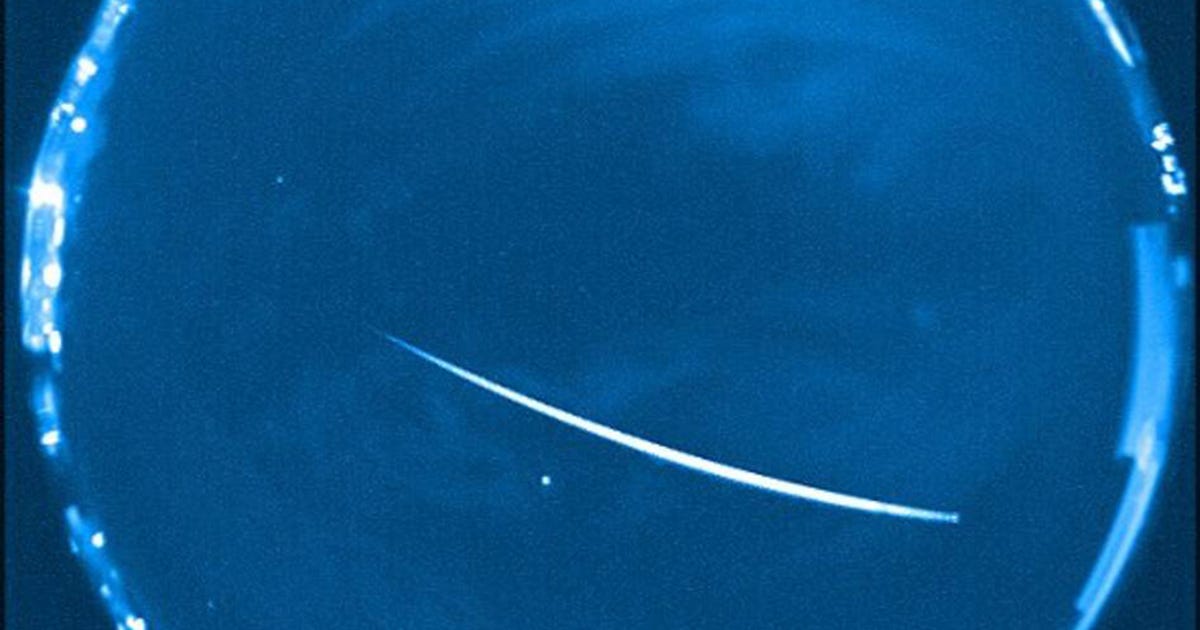2022 Geminid Meteor Shower Ramps Up This Weekend as Peak Approaches
The Geminid meteor shower, typically the strongest meteor shower of the year, is starting to intensify ahead of its peak next week, and it’s already producing shooting stars and fireballs.
The Geminids have technically been active for a few weeks, but the shower will begin to increase significantly this weekend when it may become possible see around a dozen or more meteors per hour under ideal conditions, according to the American Meteor Society.
It’s a big windup to a far bigger crescendo, when the Geminids can deliver more than a hundred meteors per hour on peak nights. This is also the rare shower that doesn’t require you to wake up at atrocious hours before sunrise for the best viewing experience.
In 2022, the shower is active from Nov. 19 until Dec. 24, peaking on the evening of Dec. 13 into the following morning. The moon will be more than two-thirds full that night, which is a bit of a bummer but certainly not enough to discourage skywatchers from heading outside for a look. If you’re in the Southern Hemisphere you’ll do better to go looking for Geminids later in the night, but fortunately it’s summer for you, requiring fewer warm layers than many watchers above the equator will want to bring.
The Geminids are the rare meteor shower that don’t seem to be traced to an active comet that makes intermittent visits to the inner solar system spaced out by several years or longer. Instead, the source seems to be the asteroid 3200 Phaethon, which astronomers think may be an extinct comet or new kind of object called a “rock comet,” according to NASA.
Stellar 2021 Perseid meteor shower shines in shots from around the world
See all photos
Whatever it is, the pieces of debris and detritus that have broken away from Phaethon over the years form dusty clouds that are more dense than what most comets leave behind. This explains why the Geminids are consistently one of the stronger annual showers. Each December we drift through the most dense part of this cloud and hundreds or thousands of bits roughly the size of a pebble burn up as they collide with our upper atmosphere.
For the best chance of catching as many Geminids as possible, the most important thing to do is to find an observing spot untainted by light pollution that has a broad view of the sky, which is hopefully cloudless. While it’s best to mark the peak night on your calendar, it’s possible to catch a few meteors an hour right now, especially as other showers like the Leonids and Taurids are still active.
If the moon is up, you can try to orient yourself so it’s at your back as much as possible.
Once you’ve got the ideal spot, lay back, relax and give your eyes time to adjust. Then just watch. Plan for at least an hour for the whole experience as there are always lulls in activity. On the peak night, if you’re lucky with ideal conditions, you might see up to 150 meteors in an hour.
Your best chance to see that many is probably around 2 a.m. when the radiant that the Geminids appear to radiate outward from (in the direction of the constellation Gemini, hence the name) is highest in the sky. That said, the radiant is above the horizon earlier in the evening as mentioned earlier, and these more friendly hours are also the best time to see a bright “earth-grazer,” which is nickname for a brilliant fireball that appears to flame out spectacularly just above the horizon.
However you do it, be sure to dress appropriately and bring refreshments so you aren’t tempted to head back inside and ruin your night vision. Happy spotting!
For all the latest world News Click Here

